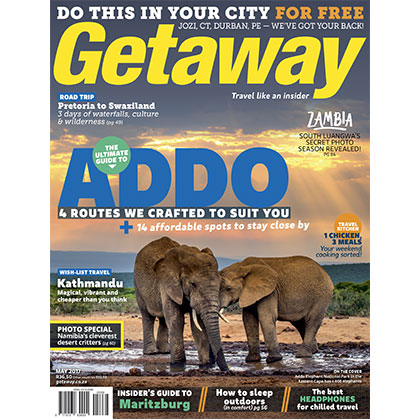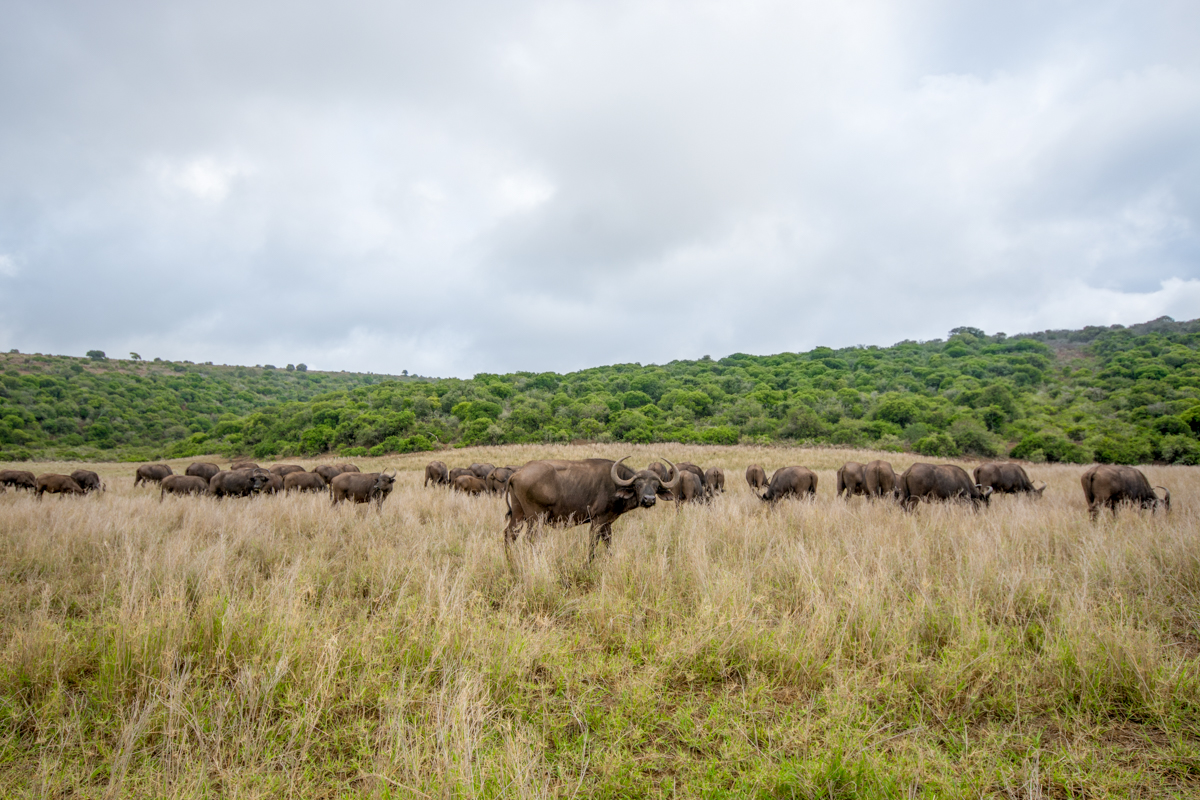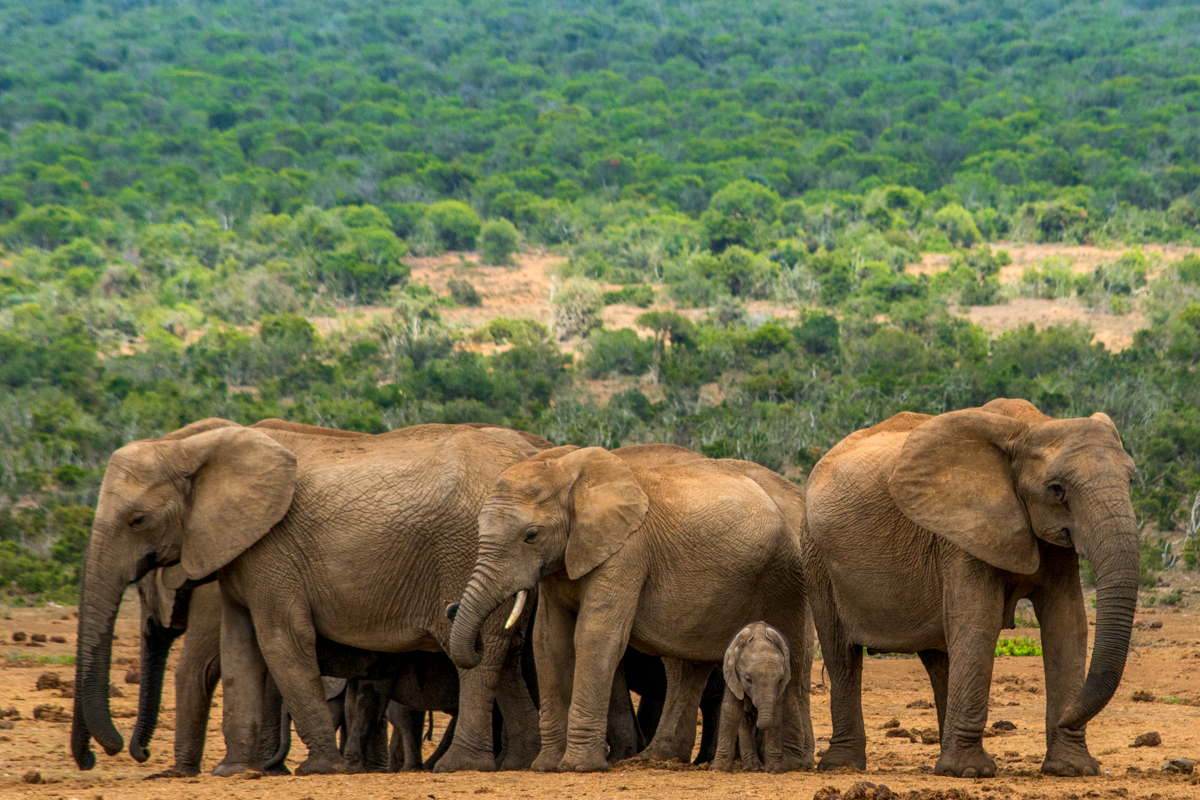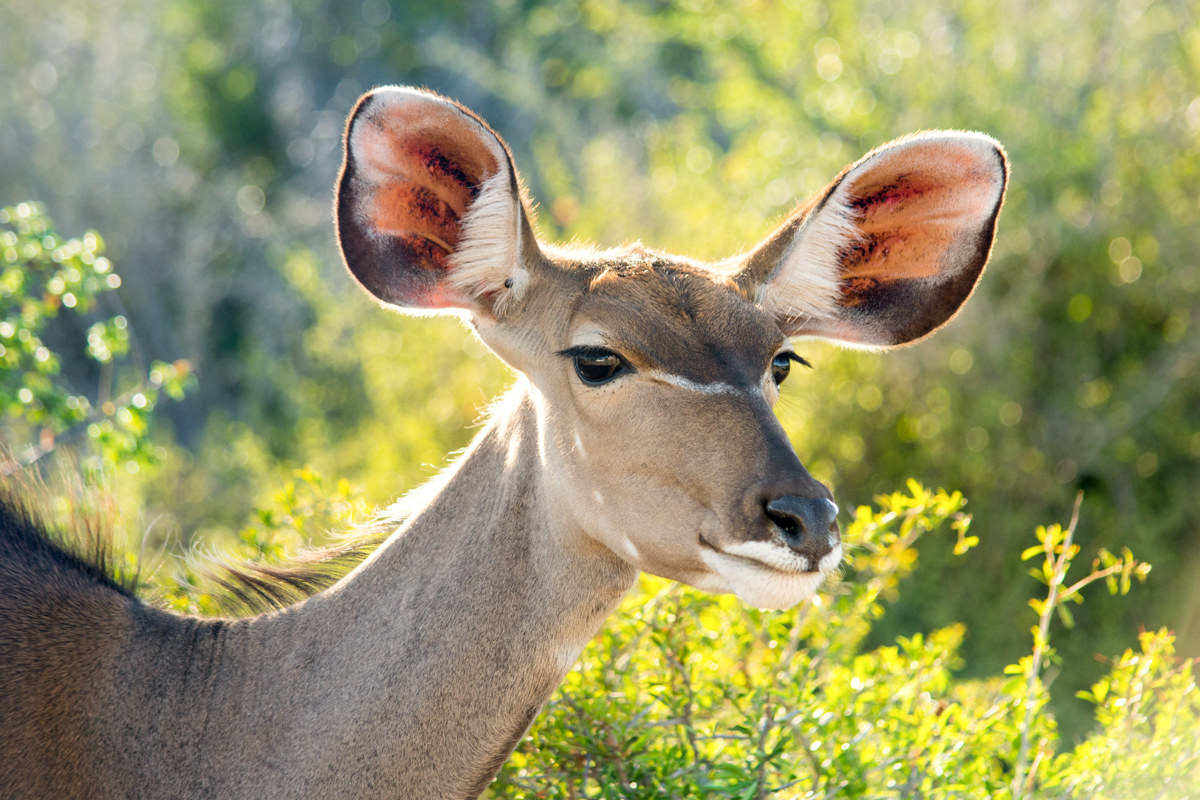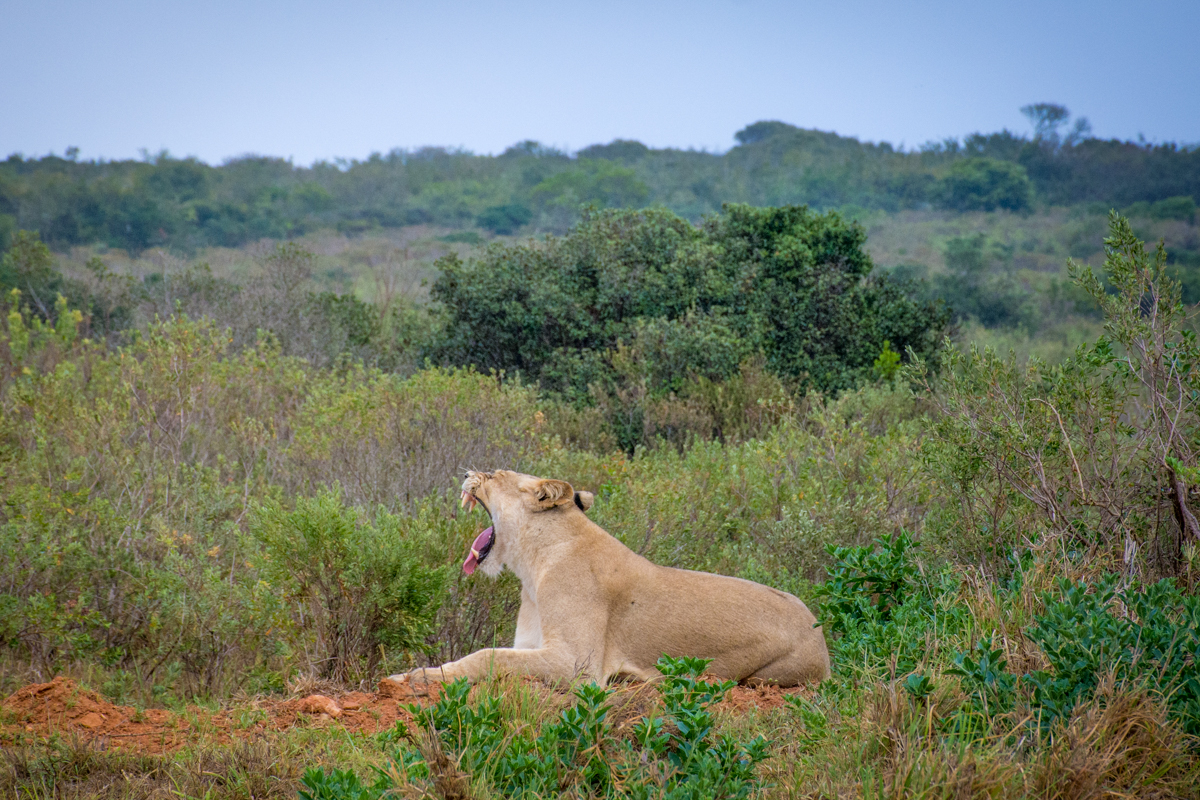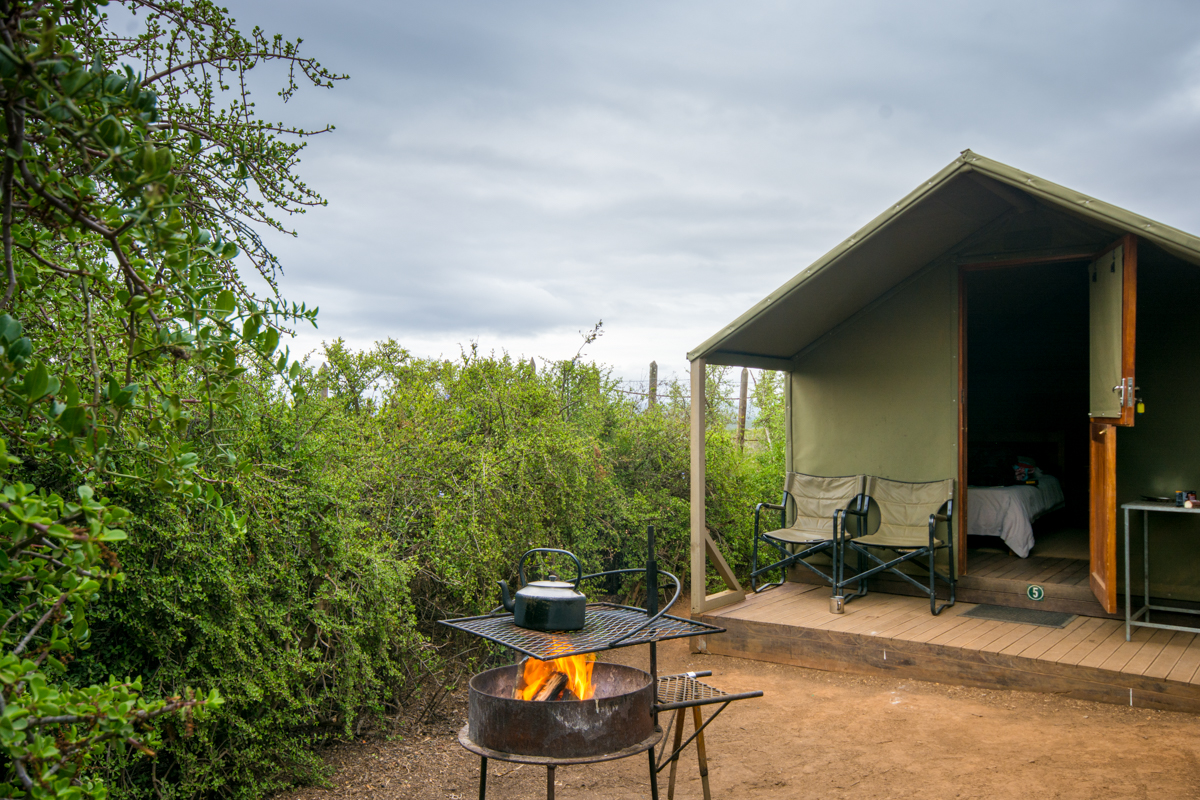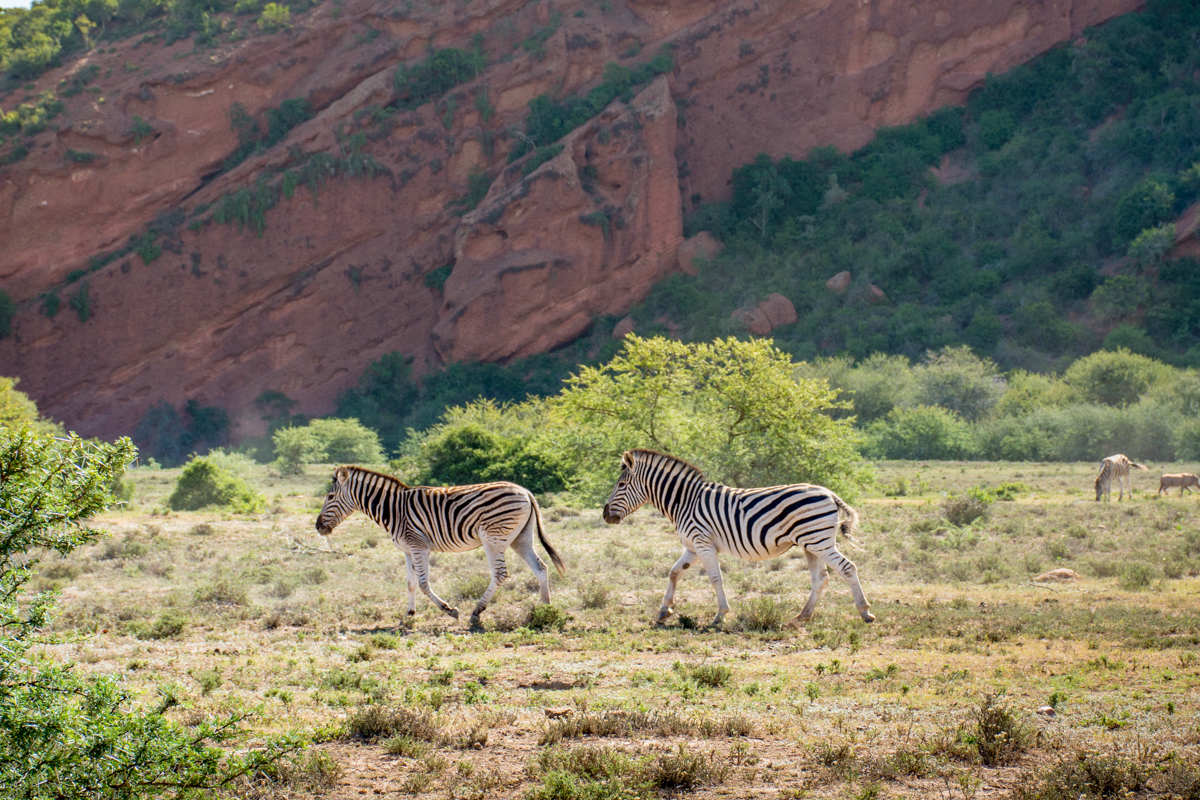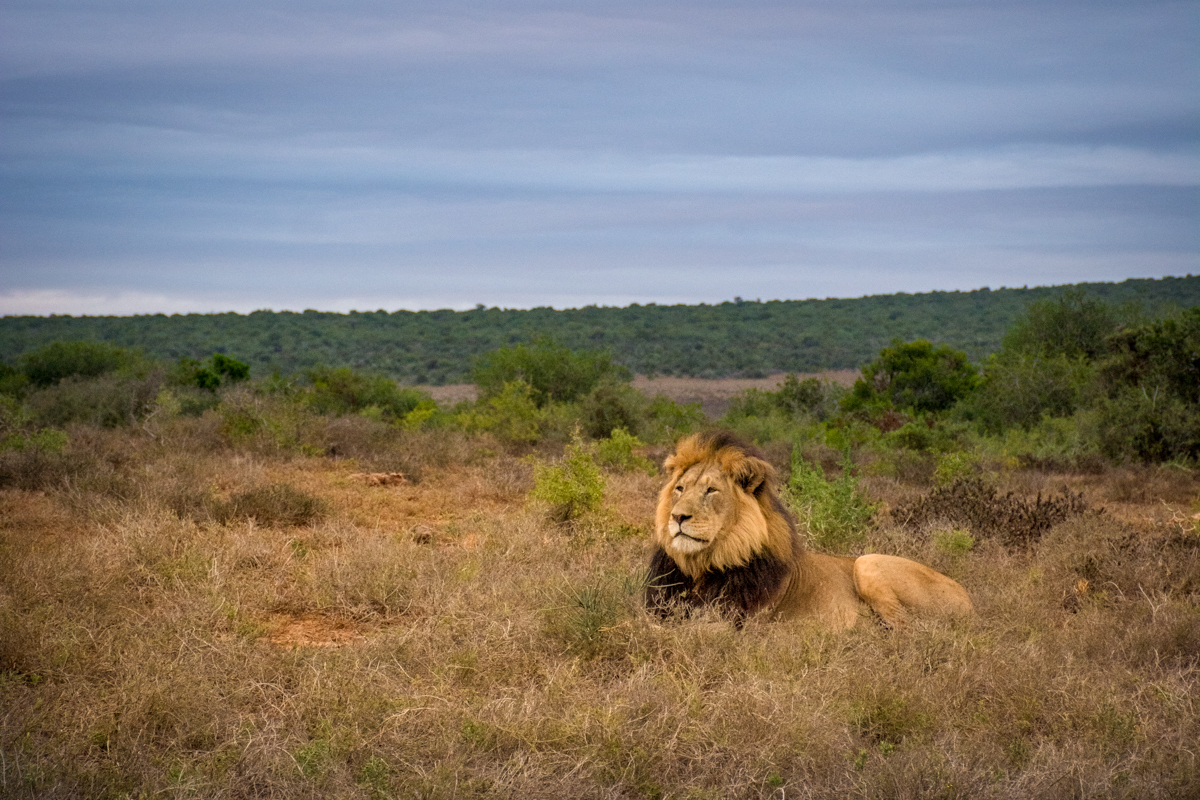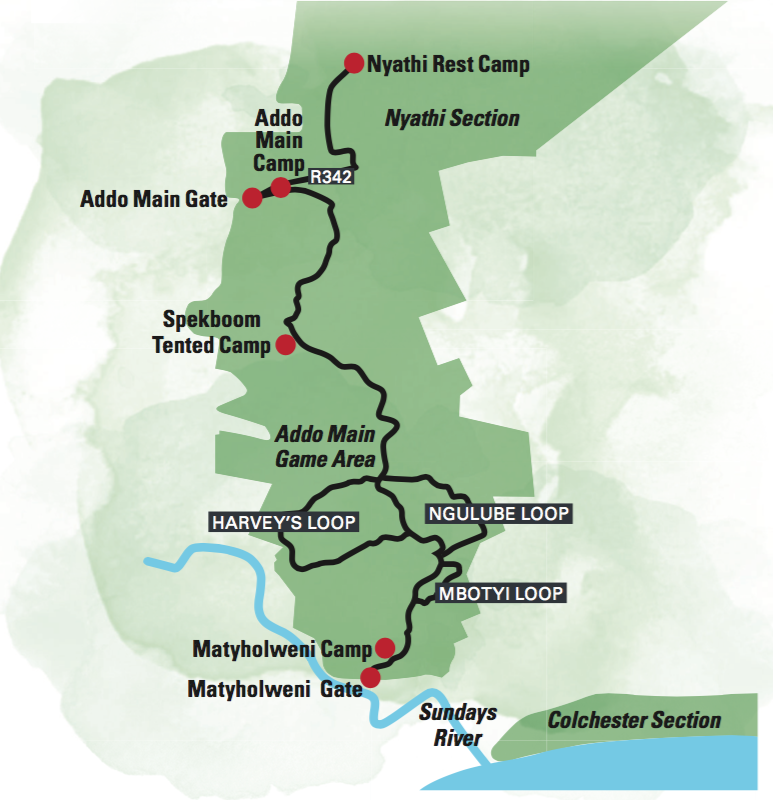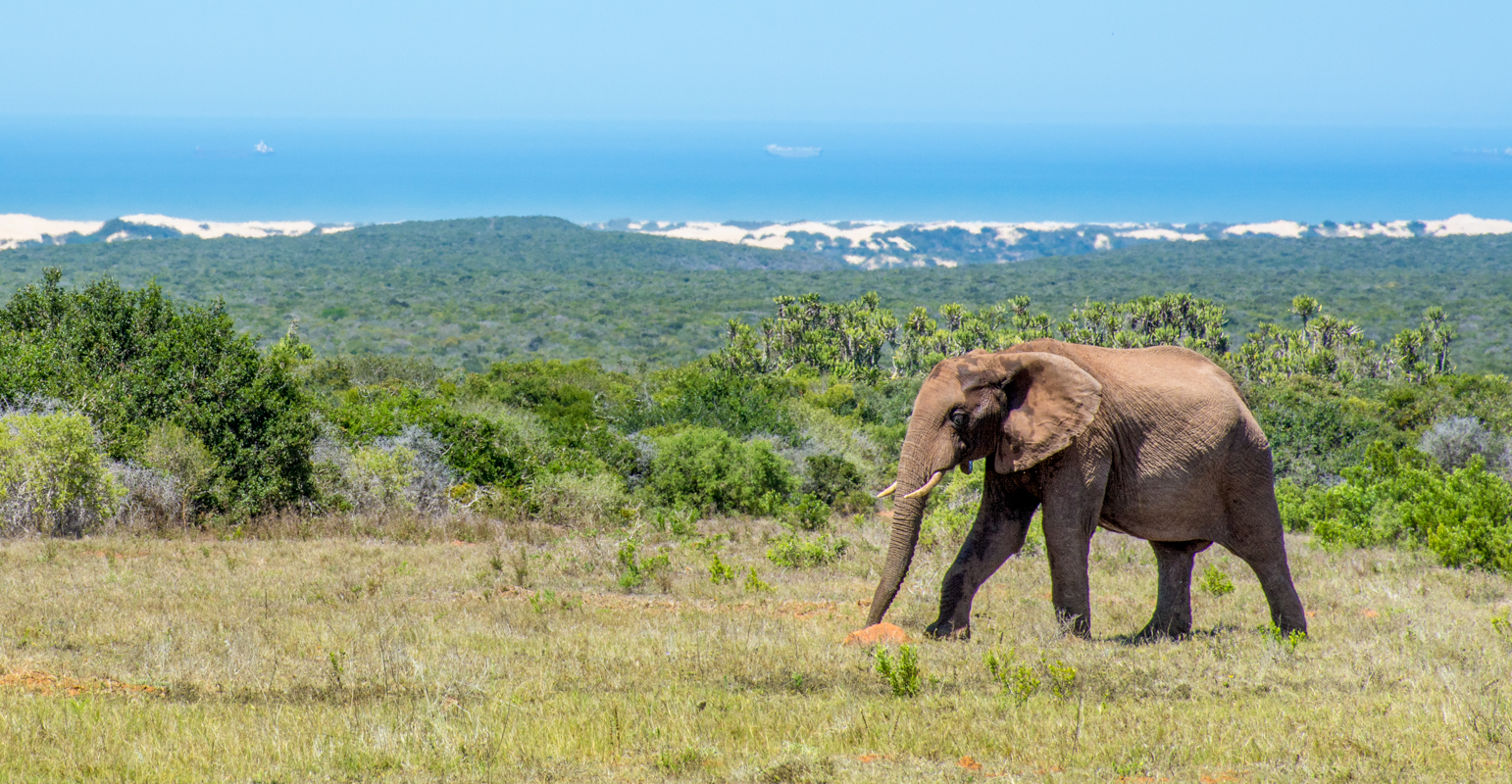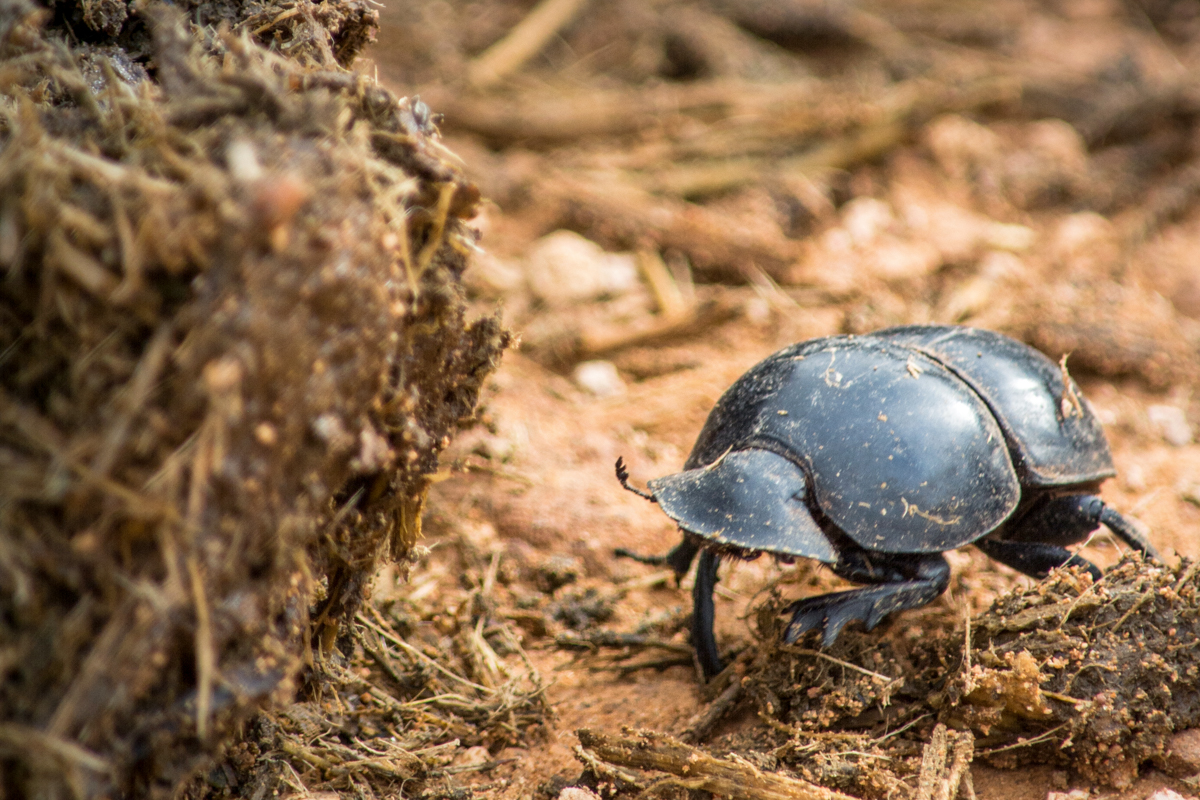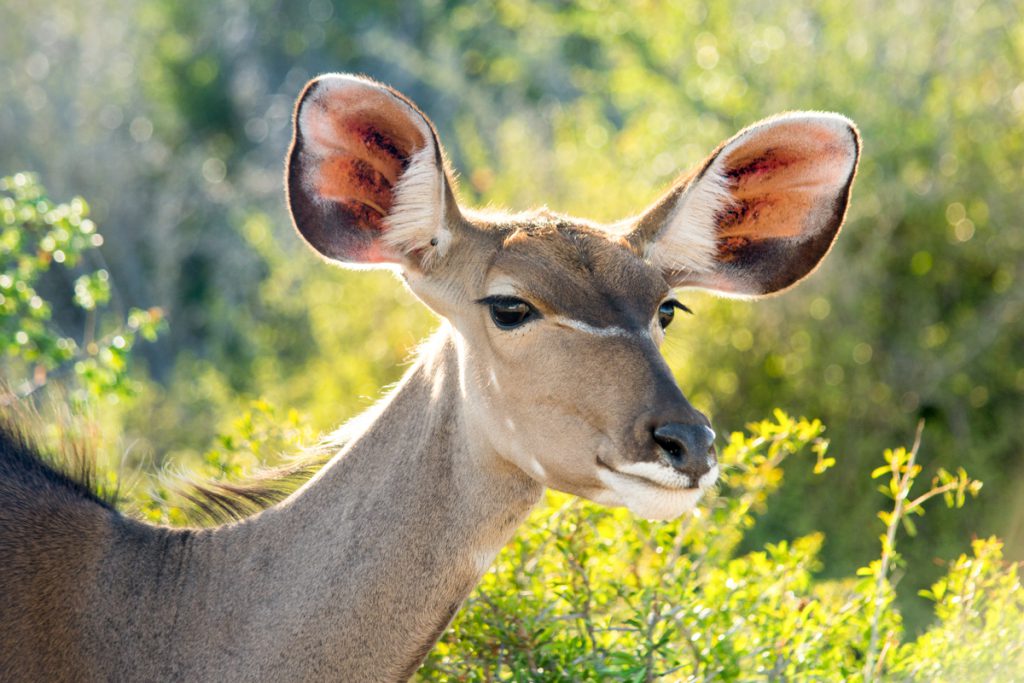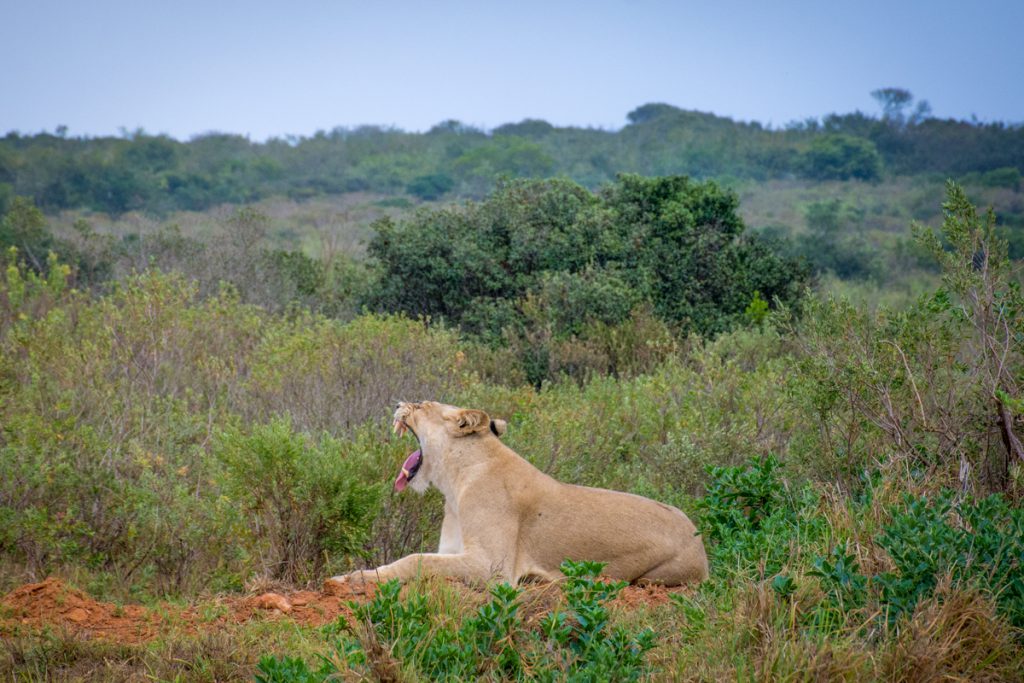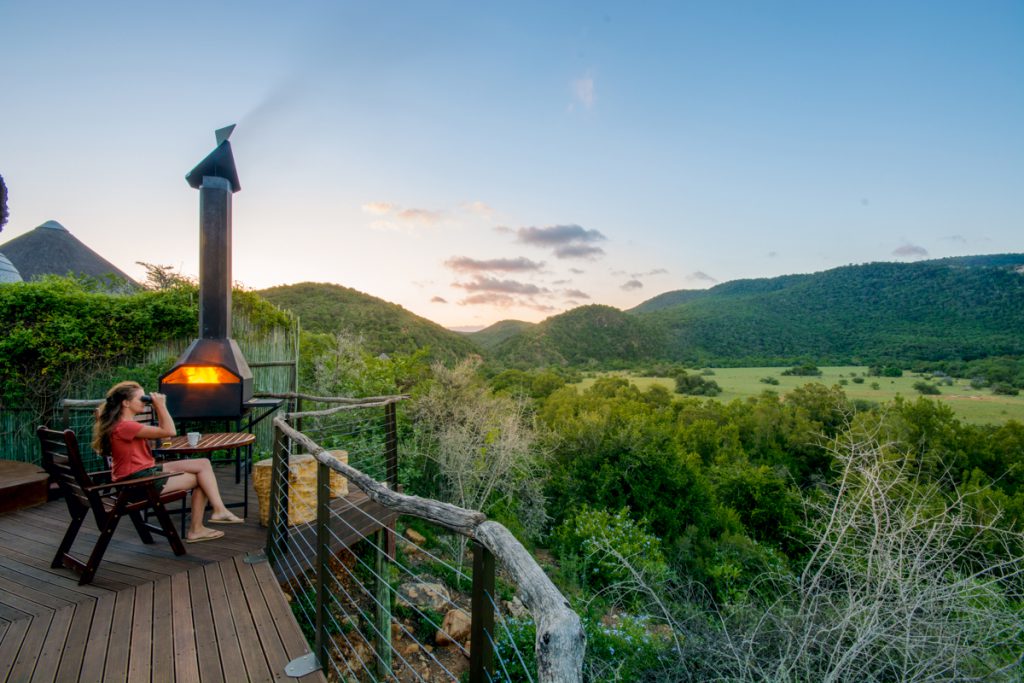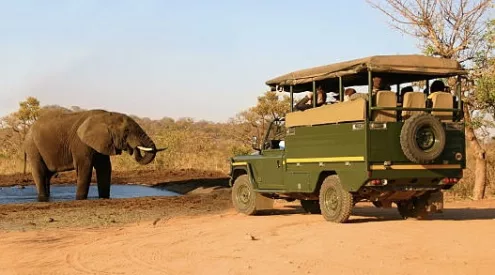There are over 600 elephants in Addo Elephant National Park. We created a self-drive route (doable in a sedan) to see the best big animals in the park.
Also read: 10 things you didn’t know about Addo Elephant National Park
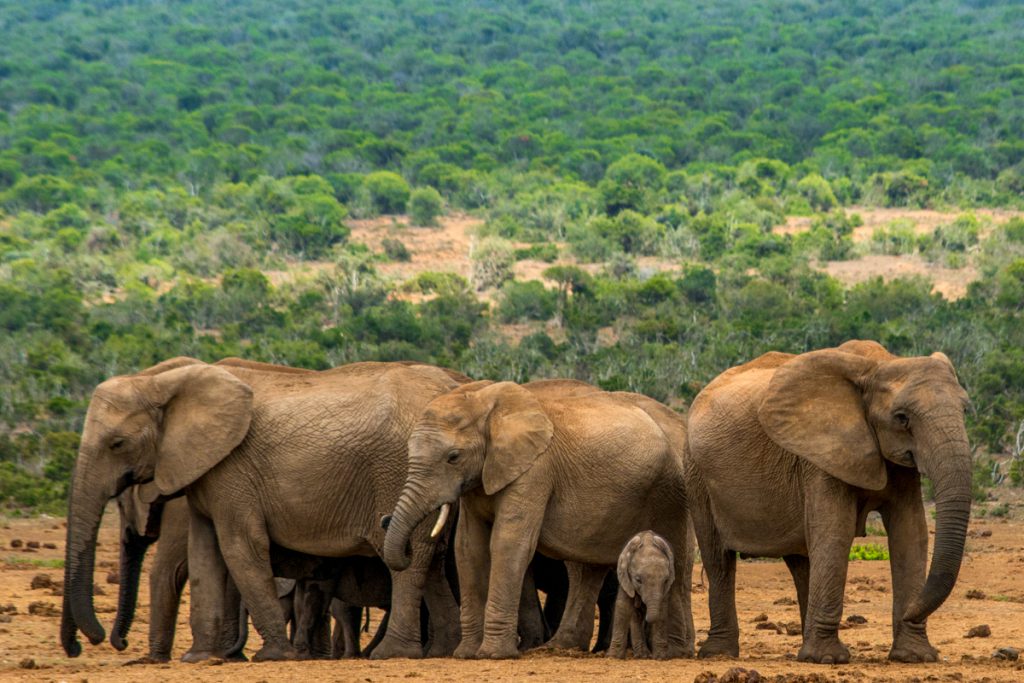
This herd of elephants was protective of their very new member. You’ll also notice, some of the females don’t have tusks in Addo.
Addo’s Main Game Area and Colchester Section are the regions that most people think about when envisioning the park. Together they are roughly 24000 hectares and this is the place to see elephant hoards (in future, some of the ellies will also be moved to other sections of the park).
Other special sights include naturally tusk-less elephants, the Addo flightless dung beetles and caracals. You’ll also see kudu in numbers as large as the herds of impala in Kruger, and an abundance of warthog snuffling about on their knees.
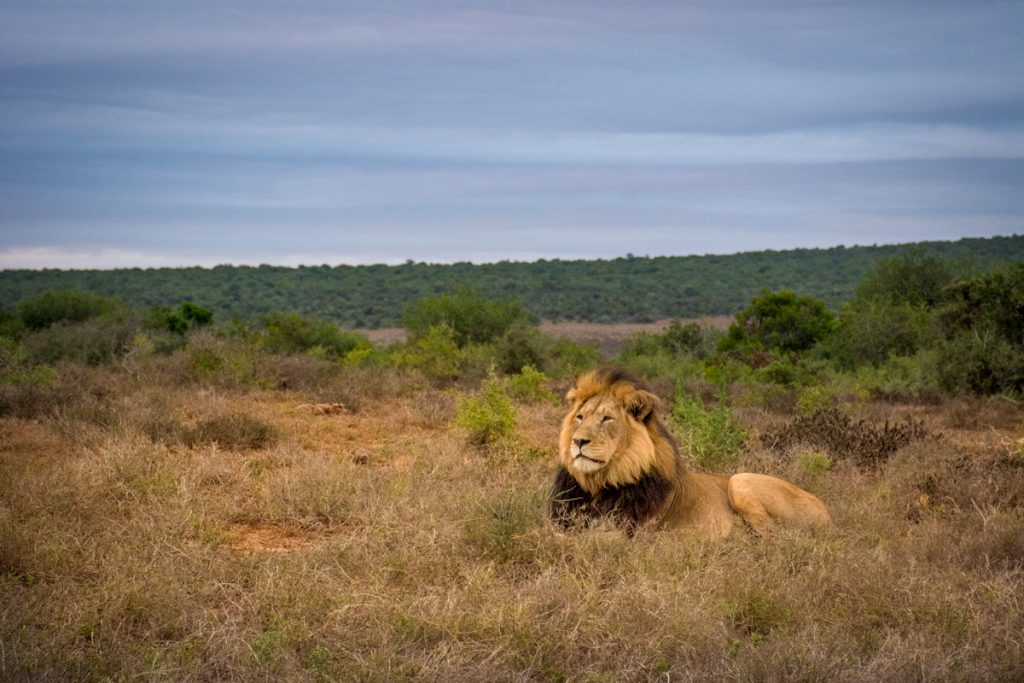
This regal black-maned lion was introduced to addo roughly ten years ago all the way from the Kalahari.
It’s also home to handsome lions that were introduced more than 10 years ago from the Kalahari, as well as impressive herds of Burchell’s zebra, buffalo, spotted hyena, red hartebeest and eland. Most life is found around the waterholes because this section of Addo has no natural running water and everything is pumped up by boreholes.
Guides in Addo don’t carry firearms because these elephants are some of the gentlest in the country. They don’t feel threatened around cars and even in musth pose little threat – that said tourists should never get too close as it makes an elephant feel threatened, rather give them space and park the car a little away. More often than not, the ellies will come to you – and there are over 600 of them in the park.
If you’re lucky you might see leopard (very, very lucky – SANParks guide Ryan Mew last saw a leopard in 2008, but camera traps prove their presence). Addo Main Camp is the park’s hub – busy with tourists and day visitors, it’s the only area in the park with a restaurant and fascinating info centre, and from here there are guided game drives. The south is quieter. Its only camp, Matyholweni, is 36 kilometres away (without driving the various loops) and has just 15 units. No buses or caravans are allowed on these quiet meandering roads. The area is more open, making it good for game viewing and the best place to start. It’s also where I spotted my first lions.
How to see a lion
Your best chance is to have local guide Simnikiwe Nogaya in your vehicle (SANParks guide Ryan Mew says that four days out of seven, guides will see lions). Simni has worked in the park since 2000 and knows how to find predators. ‘I open the window when I start on a drive and listen out for jackals and hyena in the mornings. When the jackals bark, rather than howl, it could mean lion are around.’ Often, the presence of crows (there are no vultures in the park because there’s nowhere for them to nest) can alert you to a nearby kill. Simni also recommends paying attention to zebra: often they will all stare in the direction of a predator and harrumph like a horse to warn others. Old carcasses also give a good indication. Ngulube Waterhole, Hapoor Dam and the area that turns off towards Carol’s Rest are hotspots too.
Do it: A hop-on guide costs from R210 for two hours in a normal sedan. Book at Addo Main Camp or call Simni directly on 0784025888.
Plan your trip to Addo Elephant National Park
Day one: Port Elizabeth to Matyholweni
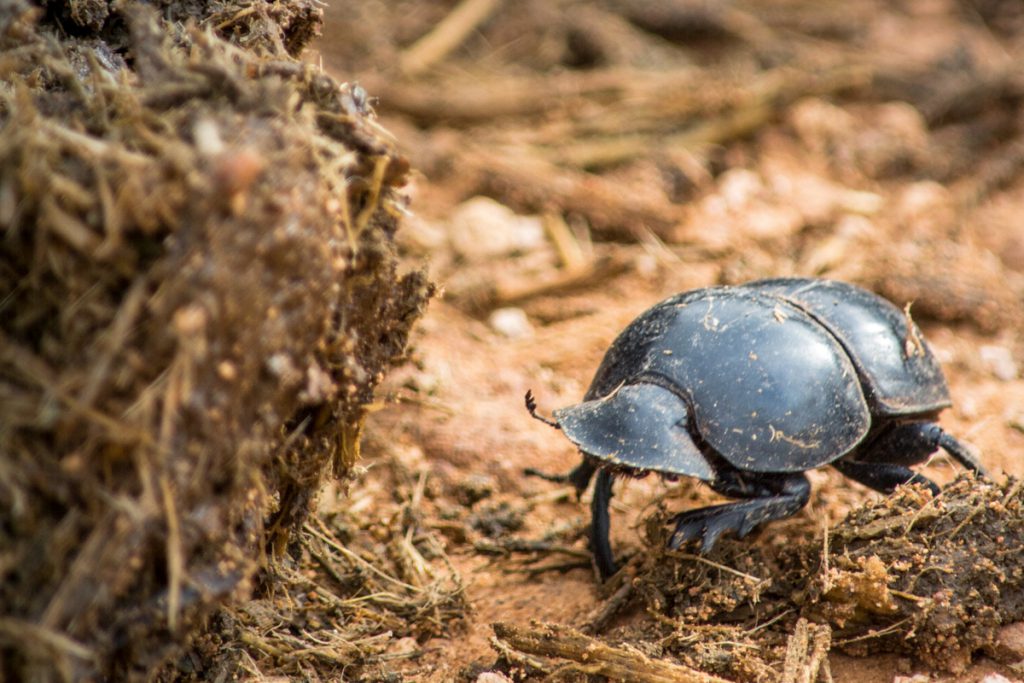
See the very special Addo flightless dung beetle in this section of the park – they’re especially common after rain.
It’s a short drive (45km) to Matyholweni Gate from Port Elizabeth Airport. Check in and drive to Ndlovu Lookout for views over the valley, then to Peasland Waterhole. A few kays later stretch your legs at the Algoa Bay Lookout Point. Then turn right onto the Ngulube Loop and stop at Ngulube Waterhole. I saw two young female lions here – sweep your binocs along the tops of the hills and look for their pale sand-colour hide against the green foliage. Carry on along the Ngulube Loop and keep left to join the Mbotyi Loop. Look out for animals – the background of sea and dunes are a perfect photo op if they comply.
Stay here: Matyholweni Rest Camp is perched on a hill. Each thatched unit is roomy with an open-plan kitchen and great outdoor dining deck with a braai overlooking the valley. The two-sleeper units have better views than the family ones. From R1390 for two people.
Day two : Matyholweni to Spekboom
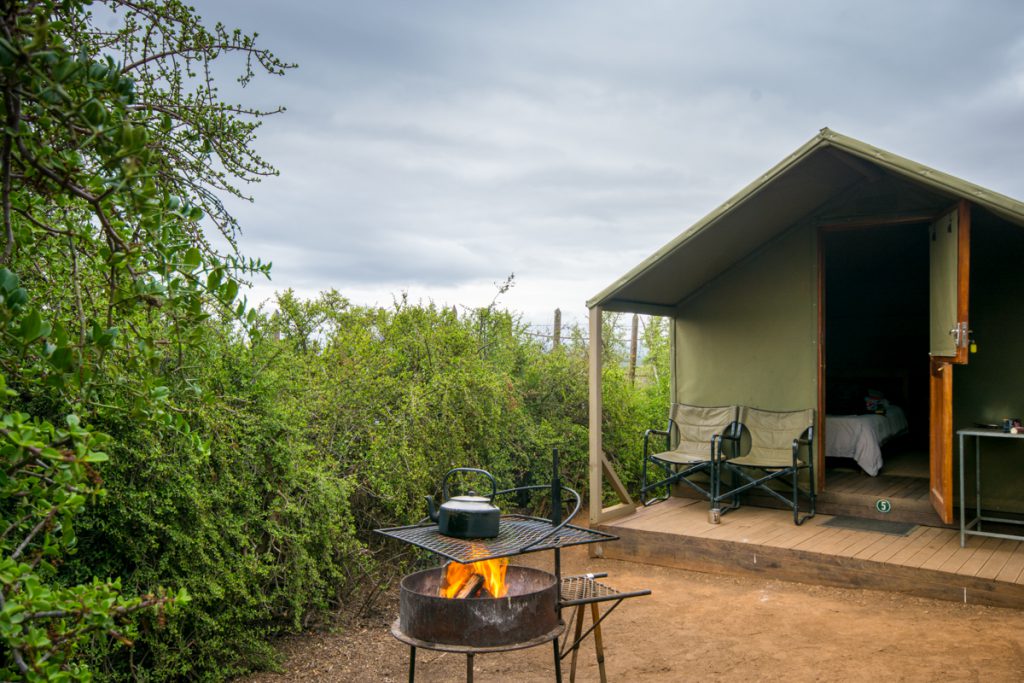
The stoep at Spekboom Camp is sheltered and private. This small camp also has its own private water hole.
Leave early, head north and turn left onto Harvey’s Loop (look out for the tree protected protected against elephants by bees about two kilometres into the loop). Join the main road north again and stop for breakfast at Jack’s Picnic Site. There are no bins in the visitor areas of the parks so travel with your own rubbish bags to deter rodents. Stop at Hapoor Dam (a popular watering hole for ellies) before heading to Addo Main Camp, where you’ll need to check in for a night at Spekboom Tented Camp. While there, visit the Underground Hide and Interpretation Centre, and book a hop-on guide for the next morning. Take a drive to Carol’s Rest (another popular waterhole) and then to Spekboom to unpack while it’s still light (it’s off the grid). Head back to Hapoor Dam for golden hour – it’s just a 10-minute drive back.
Stay here: Spekboom Tented Camp consists of five well-spaced, private tents on decks screened and separated by spekboom. Number five, the last stand, was perfect because I could walk to the fence to check for anything at the waterhole down to the right. From R870 for two people.
Day three: Spekboom to Nyathi
Take an early drive to Addo Main Camp to meet your hop-on guide (it takes about 40 minutes, so book it to start an hour after the gate opens). It’s the most affordable way to have a guided experience in the park and unique to Addo. At present Simnikiwe Nogaya is the only hop-on guide but park authorities are hoping to train more. Afterwards, check into Nyathi Rest Camp at Addo Main Camp. To get to Nyathi drive out the main gate onto the R342. It’s the only way to experience this section, which I found to be the most scenic of all the game areas.
Stay here: Nyathi Rest Camp started as a concession lodge and was recently taken over by SANParks. The self-catering cottages are plush and in a hard-to-beat location: perched high above a waterhole where game stream in to drink – even the bath has a generous view. From R1650 for two people.
Use this map to get around
This story first appeared in the May 2017 issue of Getaway magazine.
From our ultimate guide to Addo, free things to do in your city, a photographic getaway to South Luangwa and getting the best of Nepal; our May issue is guaranteed to inspire.
